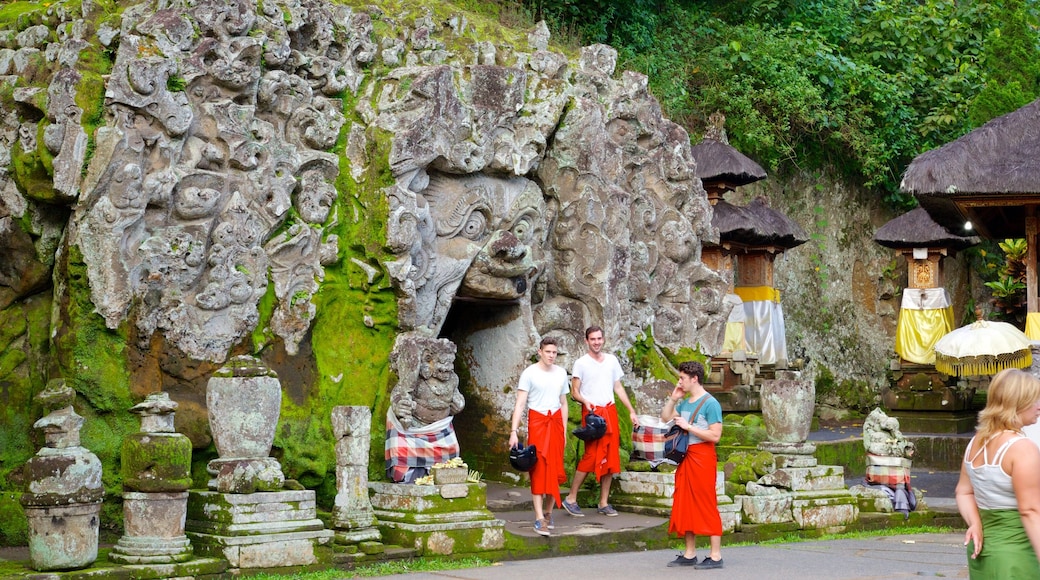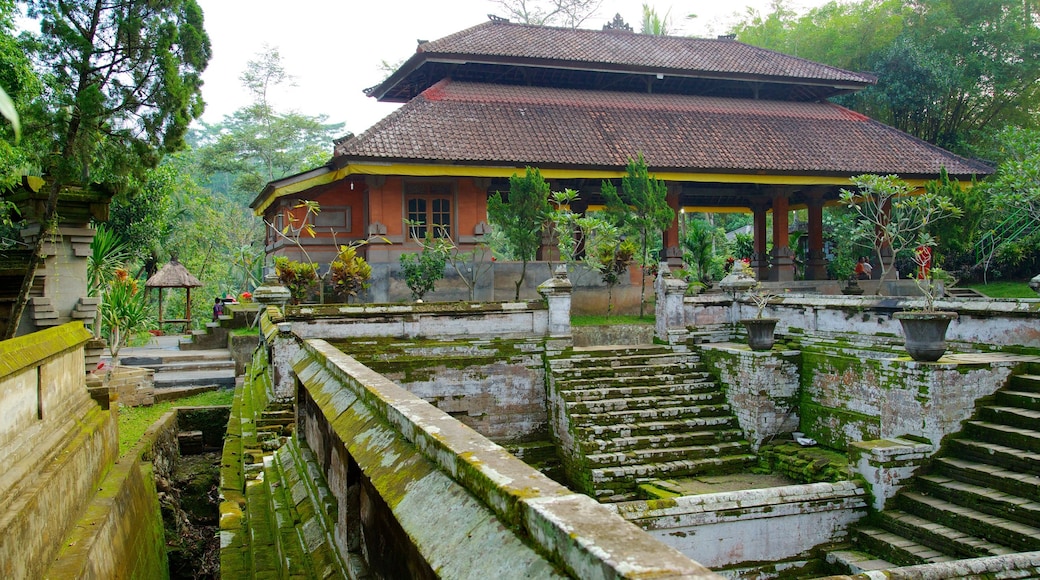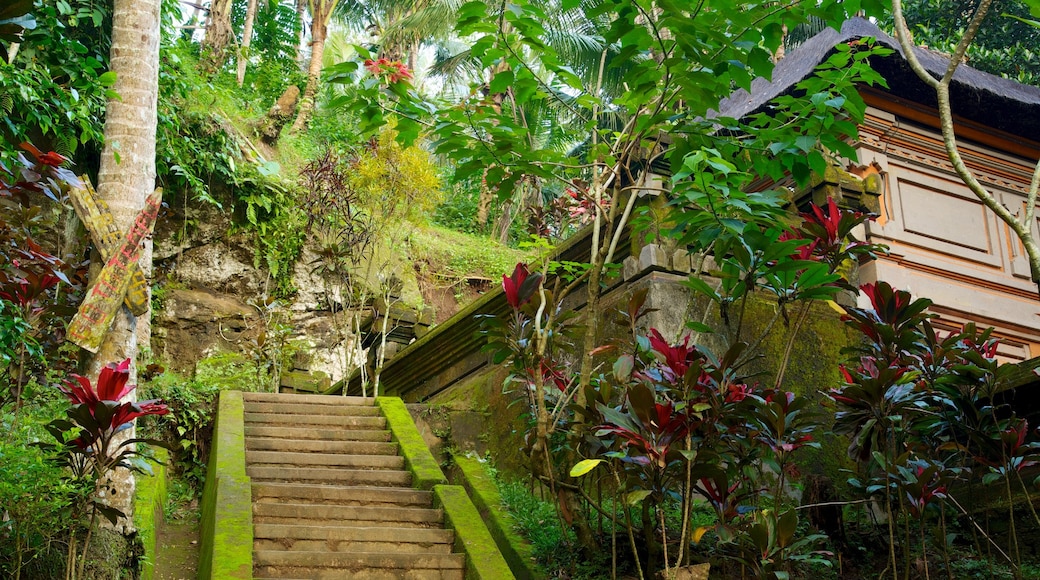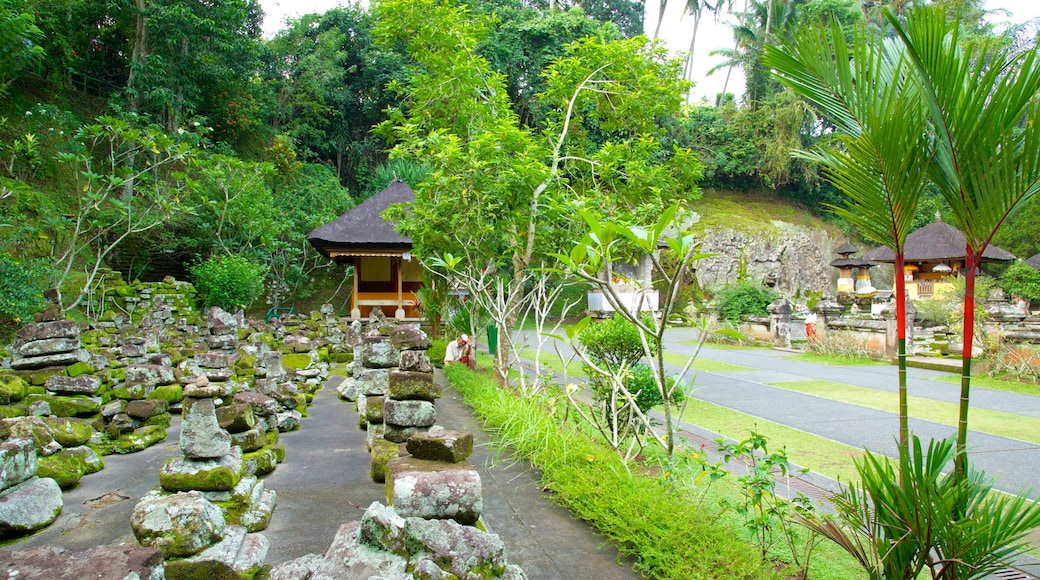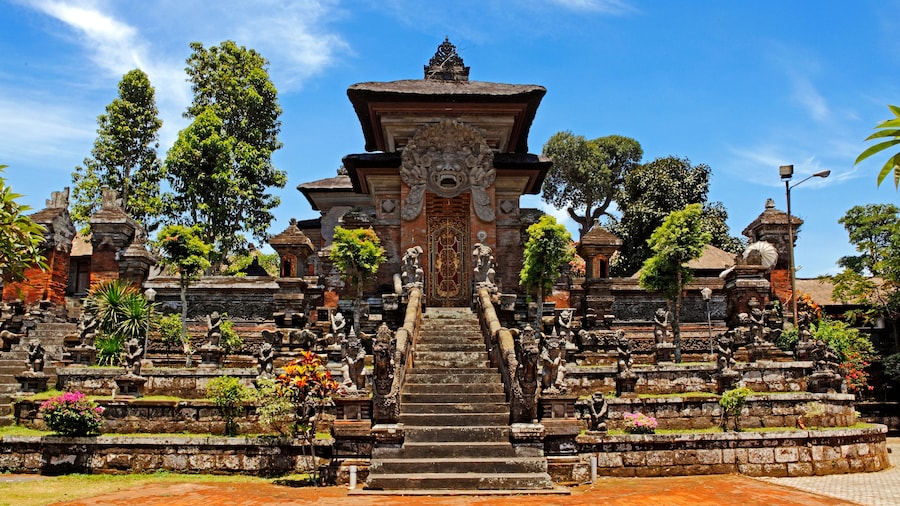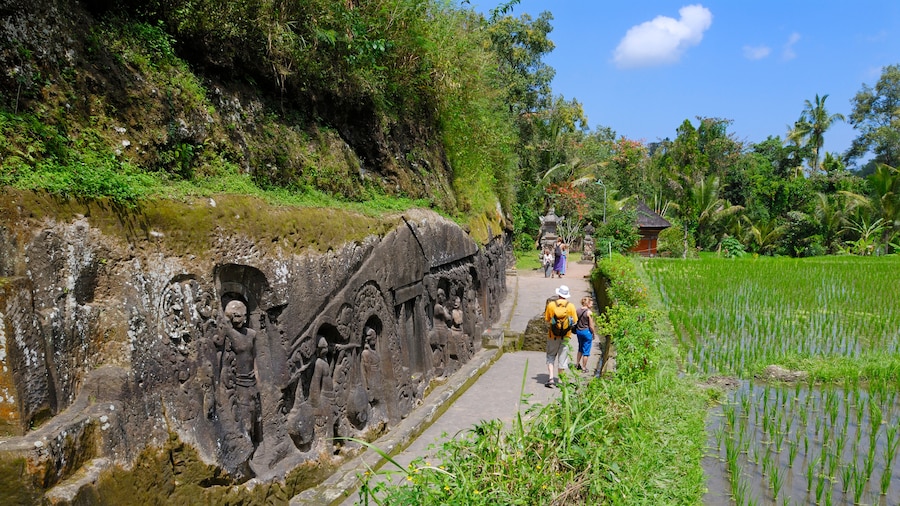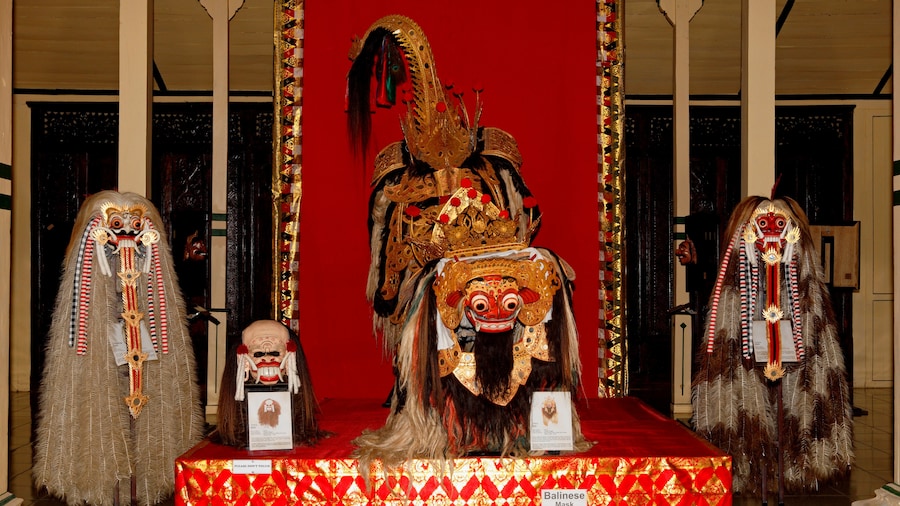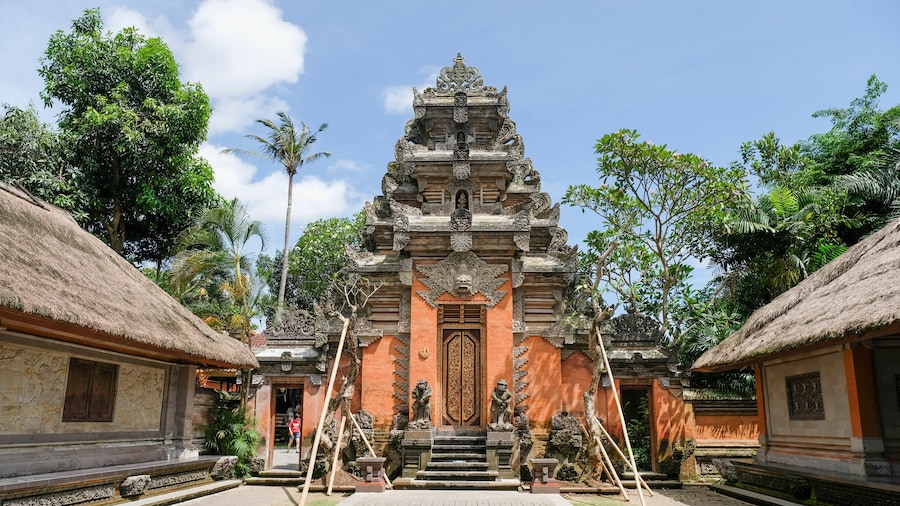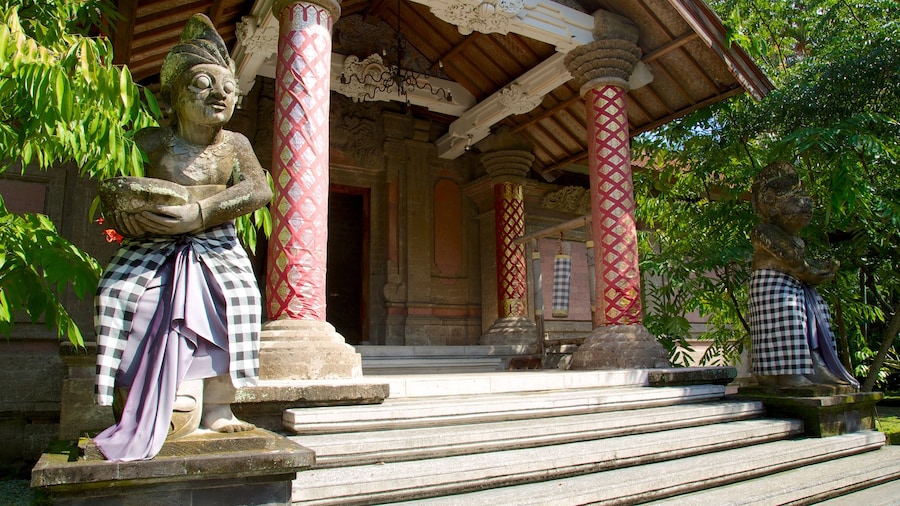Shrouded in mystery, this cave boasts a Hindu temple, fountains and sacred ponds that are steeped in history.
The Elephant Cave or Goa Gajah is an archaeological site of some significance. It is believed to date back to between the 10th and 14th centuries but more exact dates, much like the origin of its name, remain unknown.It is certainly a very dramatic place. You enter the cave through the mouth of a Kala demon head, with its distinctive bulging eyes, typical of many of these types of sculpture. There is a narrow passageway adorned with ancient inscriptions that leads to the end of the cave. On one side is an alcove, containing a statue of Ganesh, on the other is a worship area. Here you will find two representations, one of Lingham the other of Yoni. These are symbols of Shiva and female energy respectively.Down the stairs, and into the gardens, you will find the Pirtirtaan Pond which is filled with sacred water and is still used in religious ceremonies today. There is a series of statues of Widyadara – Widyadari angels at the edge of the pond signifying that the waters here are sacred.Whilst the cave is small, it is a highly impressive place as are its surroundings. Nestled in a valley with a cascading waterfall, there are beautiful tropical gardens and another Buddhist temple nearby. There are also rice terraces close by which provide a dramatic back drop to the whole scene.Situated near Bedulu village in Blahbatu district of Gianyar regency, the Elephant Cave is some 6 kilometres from Ubud. It is open daily and a small fee is charged to enter. There are tours available or you can access the site by car. There is free parking on site. You may opt to pay a local guide to take you round the area. However, if you prefer to do your own thing, the word ‘tidak’ or ‘no’ may come in handy, as these guides can be very persistent. Women should not enter the cave with bare shoulders and both men and women should wear a sarong. Sarongs are available to purchase from several stalls near the cave’s entrance.
